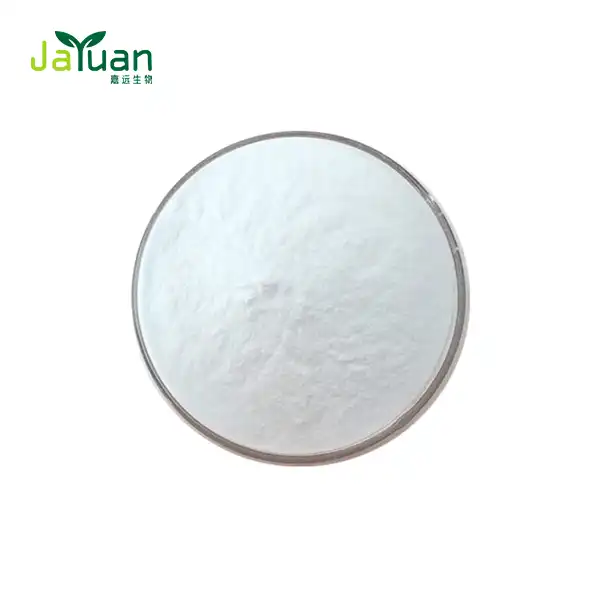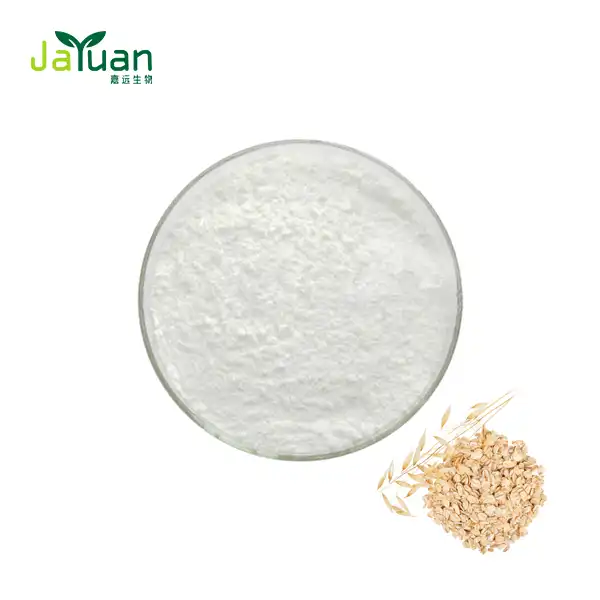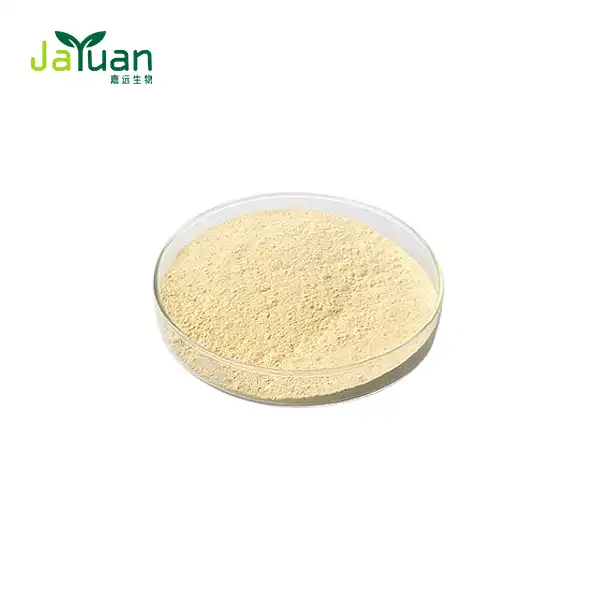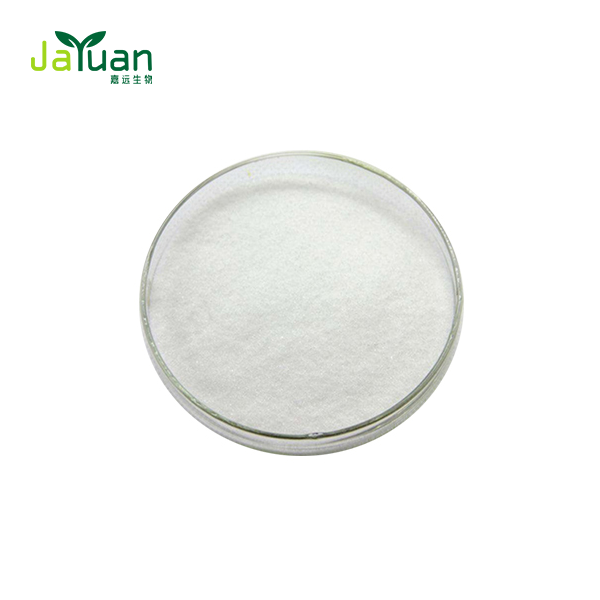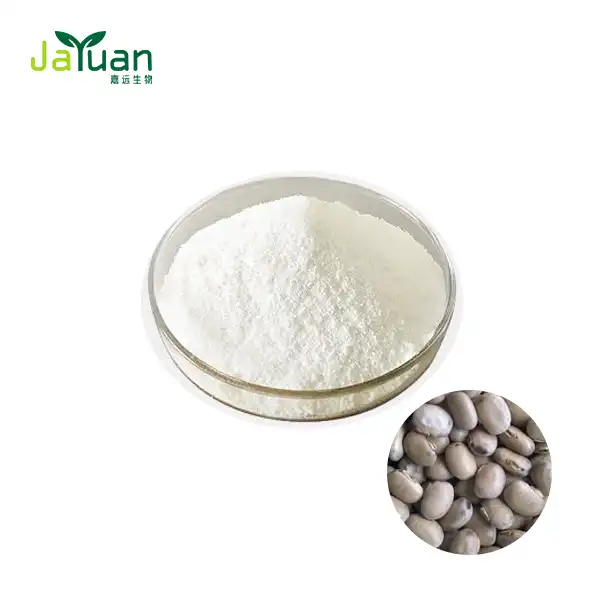Does Stevioside Have Stereoisomers?
Introduction to Stevioside
The Stevia rebaudiana plant yields the stevioside, which has recently attracted a lot of interest.Consumers are looking for natural sugar substitutes more and more as they grow more health conscious.The natural sweetener called stevioside, which is extracted from the leaves of the Stevia rebaudiana plant, has gained notice for its ability to impart sweetness without having the same caloric impact as sugar. Concerns concerning the stereoisomer content and chemical makeup of Stevioside Powder have surfaced as the market for natural sugar substitutes expands.
Whether stevioside includes stereoisomers and how it stacks up against other sweeteners in terms of possible health advantages and drawbacks are two of the most commonly asked issues.
Stevioside's potential stereoisomeric structures, as well as their ramifications for wellbeing and security, will be analyzed in this article. We hope to provide a nuanced comprehension of stevioside and its significance as a natural sweetener by conducting a comprehensive analysis.

Understanding Stevioside's Molecular Structure
It is crucial to investigate the molecular structure of stevioside in order to ascertain whether stereoisomers are present. Understanding stevioside's chemical composition allows us to better understand its characteristics, including any potential alterations that might affect its sweetness, metabolism, and physiological effects.
A glycoside molecule, stevioside is mainly made up of glucose units connected to a diterpene molecule. Stevioside extraction's strong sweetness is attributed to the diterpene component called steviol. Stevioside does in fact have stereoisomeric forms, as can be seen by looking at its chemical structure. The molecule's ability to assume several stereoisomeric configurations due to its numerous chiral centers can affect both its physiological and chemical characteristics.
Think about how the atoms are arranged in space within the molecule to create the various stereoisomeric forms of stevioside to comprehend them.
These changes may have an effect on how the molecule interacts with taste receptors, metabolic enzymes, and biological targets. This could affect the molecule's sweetness, bioavailability, and physiological consequences.
We refer to leading scientific studies and publications that have elucidated the molecular structure of stevioside and characterized its stereoisomeric forms to provide comprehensive insights. We are able to present a comprehensive analysis of the molecular architecture of stevioside and its relevance to the presence of stereoisomers by integrating findings from these sources.
Investigating the Role of Stereochemistry in Bioactivity and Sweetness
Stereoisomers play a crucial role in determining the taste and biological activity of molecules. In the case of Stevioside Powder, exploring the presence of stereoisomers can provide valuable information on how different structural arrangements may influence its sensory perception and interactions with biological targets, shedding light on its overall functionality as a sweetening agent and potential health effects.
It is commonly known that stereochemistry shapes both the biological effects and sensory perception of natural chemicals.
In the context of stevioside, the presence of stereoisomers holds implications for its sweetness and bioactivity. Different stereoisomeric configurations can lead to varying interactions with taste receptors on the tongue, influencing the perceived intensity and quality of sweetness.
Moreover, the stereochemical arrangement of stevioside may affect its metabolism and interaction with cellular targets, influencing its potential health-related effects. By examining the stereochemistry of stevioside in relation to its sweetness and bioactivity, we can uncover the underlying mechanisms that govern its sensory perception and physiological responses.
In our exploration, we draw upon insights from reputable research articles and peer-reviewed journals that have investigated the stereochemical aspects of natural sweeteners, including stevioside extraction. By synthesizing this knowledge, we aim to provide a comprehensive perspective on how stereochemistry contributes to the sensory and biological attributes of stevioside, furthering our understanding of its functional properties.

Stevioside Stereoisomers and Their Implications for Health and Safety
Stevioside has stereoisomers, which may offer insights into its health benefits. This justifies a review of the potential effects of different forms of this chemical on physiological responses, digestion, and harmfulness.
An awareness of these consequences can help direct regulatory decisions and consumer preferences regarding the use of stevioside as a sweetener.
Because stevioside contains stereoisomers, there are significant safety and possibly health benefits issues.
Changes in the molecular structure of stereoisomers can affect stevioside's pharmacokinetics and metabolism, which may have an effect on the drug's physiological effects and safety profile.
Moreover, the molecular composition and possible stereoisomeric forms of food additives, including sweeteners, are taken into consideration when regulatory agencies and health authorities assess their safety. The consequences of stevioside stereochemistry must therefore be understood in order to guide regulatory decisions and decide whether or not steviosides are safe for human ingestion.
We dissect findings from internal and external analyses and administrative evaluations that have examined the safety and health effects of Stevioside Powder while taking into account its stereochemical variation in order to address these implications.
Our goal in critically assessing this corpus of material is to offer a thorough synopsis of stevioside stereoisomers' impact on human health and safety.This information will be useful to consumers, researchers, and regulators.
For more information about Stevioside, please contact us at sales@jayuanbio.com.
References:
1.Geuns, J. M. C. (2003). Stevioside. Phytochemistry, 64(5), 913-921.
2.Ceunen, S., & Geuns, J. M. C. (2013). Steviol glycosides: chemical diversity, metabolism, and function. Journal of Natural Products, 76(6), 1201-1228.
3.Brandle, J. E., Starratt, A. N., & Gijzen, M. (1998). Stevia rebaudiana: its agricultural, biological, and chemical properties. Canadian Journal of Plant Science, 78(3), 527-536.
4.Prakash, I., Markosyan, A., Bunders, C., & Devkota, K. P. (2014). Development of next generation stevia sweetener: Rebaudioside M. Foods, 3(1), 162-175.
5.Soejarto, D. D., Compadre, C. M., Medon, P. J., Kamath, S. K., Kinghorn, A. D., & Farnsworth, N. R. (1983). Potential sweetening agents of plant origin. III.Organoleptic evaluation of Stevia leaf herbarium samples for sweetness. Journal of Natural Products, 46(2), 232-242.
6.Chatsudthipong, V., & Muanprasat, C. (2009). Stevioside and related compounds: therapeutic benefits beyond sweetness. Pharmacology & Therapeutics, 121(1), 41-54.
7.Koyama, E., Kitazawa, K., Ohori, Y., Izawa, O., & Kakegawa, K. (2003). Fujita. In vitro metabolism of the glycosidic sweeteners, stevia mixture and enzymatically modified stevia in human intestinal microflora. Food and Chemical Toxicology, 41(3), 359-374.
8.Goyal, S. K., Samsher, & Goyal, R. K. (2010). Stevia (Stevia rebaudiana) a bio-sweetener: a review. International Journal of Food Sciences and Nutrition, 61(1), 1-10.
9.Shivanna, N., Naika, M., Khanum, F., & Kaul, V. K. (2013). Antioxidant, anti-diabetic and renal protective properties of Stevia rebaudiana. Journal of Diabetes and its Complications, 27(2), 103-113.
10.Lemus-Mondaca, R., Vega-Gálvez, A., Zura-Bravo, L., & Ah-Hen, K. (2012). Stevia rebaudiana Bertoni, source of a high-potency natural sweetener: a comprehensive review on the biochemical, nutritional and functional aspects. Food Chemistry, 132(3), 1121-1132.


